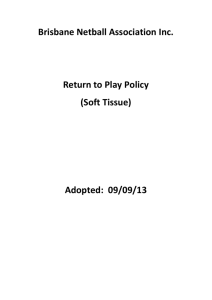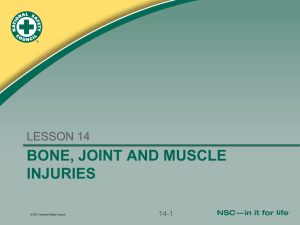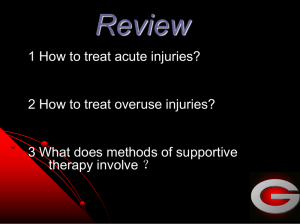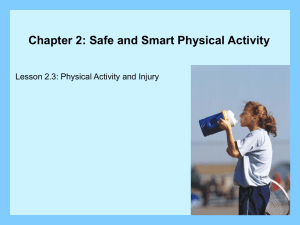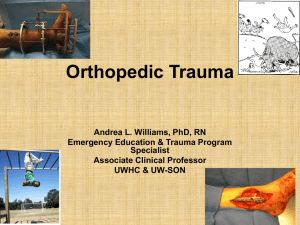CH07_BoneJoint
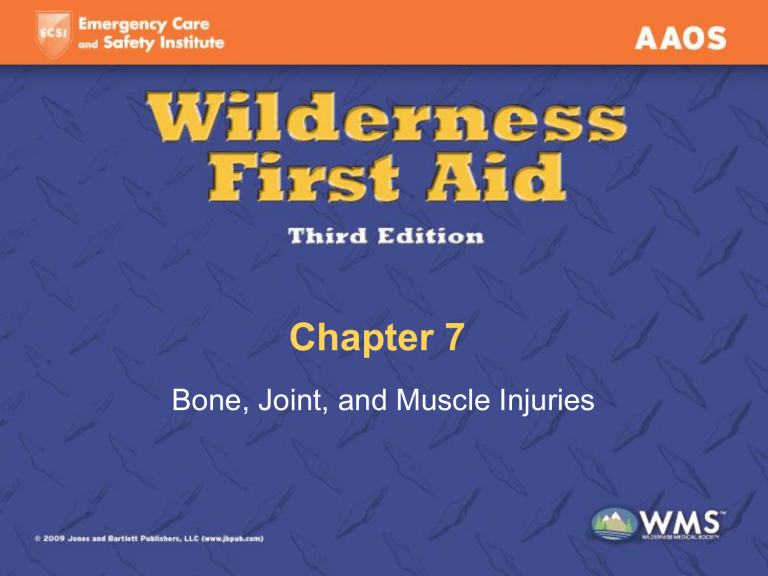
Chapter 7
Bone, Joint, and Muscle Injuries
Lesson Objectives
• Describe fractures, sprains, dislocations, strains, and contusions.
• Assess and explain how to treat bone injuries.
• Assess and explain how to treat joint injuries, including dislocations and strains.
• Assess and explain how to treat muscle injuries, including strains and muscle cramps.
Bone, Joint, and Muscle Injuries
• Open or closed fracture
• Sprains
• Strains
• Dislocations
• Contusions
Bone Injuries
(1 of 5)
• Assessment
– Signs and symptoms
• Deformity
• Open wound
• Tenderness
• Swelling
– When in doubt, treat as a fracture.
Bone Injuries
(2 of 5)
• Assessment
– Ask how the injury occurred.
– Look at the injury for deformity, open wounds, and swelling.
– Feel for tenderness and grating sensations.
Bone Injuries
(3 of 5)
• Treatment
– Control bleeding and treat for shock.
– Expose the injury.
– Check for damage to blood vessels and nerves:
• Circulation
• Sensation
• Movement
Bone Injuries
(4 of 5)
• Treatment
– Realign deformities if medical care will be delayed.
– Splint the fracture to stabilize it.
– Limit swelling and pain (RICE):
• Rest
• Ice
• Compression
• Elevation
Bone Injuries
(5 of 5)
• Open fractures
– Clean wound and irrigate bone end.
– Gently try to correct deformities.
– Cover wounds with dry, sterile dressings.
– Splint and wrap extremity.
Joint Injuries
(1 of 4)
• Dislocations
– Signs and symptoms:
• Deformity
• Severe pain
• Inability to move the joint
Joint Injuries
(2 of 4)
• Dislocations
– What to do:
• Evaluate and manage dislocations similar to fractures.
• If care is delayed or circulation compromised, attempt to reduce dislocations.
Joint Injuries
(3 of 4)
• Sprains: What to look for
– Pain
– Tenderness
– Swelling
– Stiffness
– Decreased function
– Bruising
– Joint that moves in abnormal directions
Joint Injuries
(4 of 4)
• Sprains: What to do
– Evaluate and manage similar to fractures.
– If care is delayed or circulation compromised, attempt to reduce dislocations.
– Apply RICE procedures.
– Splint or tape for support.
Muscle Injuries
(1 of 4)
• Strains and tendon injuries
– What to look for:
• Limited movement
• Tenderness
• Swelling
• Bruising
• Grating or cracking sensation with tendonitis
Muscle Injuries
(2 of 4)
• Strains and tendon injuries
– What to do:
• Apply RICE procedures.
• Stretch affected muscle gently.
• Give anti-inflammatory medications.
• Splint if pain is severe.
Muscle Injuries
(3 of 4)
• Muscle cramps
– What to look for:
• Sudden onset of severe pain
• Spasm that prevents movement
• A firm area that may be tender
Muscle Injuries
(4 of 4)
• Muscle cramps
– What to do:
• Have the victim stretch.
• Apply steady pressure over the muscle.
• Apply ice.
• If caused by heat exertion, give mildly salted water or sports drink.

